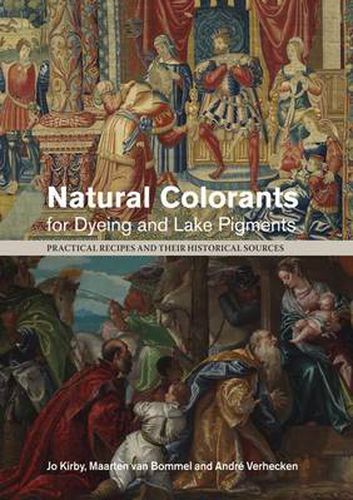Readings Newsletter
Become a Readings Member to make your shopping experience even easier.
Sign in or sign up for free!
You’re not far away from qualifying for FREE standard shipping within Australia
You’ve qualified for FREE standard shipping within Australia
The cart is loading…






This simple handbook aims to enable readers to make their own lake pigments or dye their own textiles using dyes from naturally occurring raw materials in a simple way under relatively controlled conditions and using recipes optimised for easy use in the laboratory or indeed the classroom. The book provides the basic principles of dying and lake pigment making (using the term lake pigment in its original, historical, sense indicating a naturally occurring dye precipitated onto a conventional usually white substrate, frequently a form of hydrated alumina) and from these the reader can try modifying the conditions or the amount of raw material, for example, to obtain different results. Suggestions for simple modifications are given. Contents: Introduction Natural dyes and their sources - plants, insect reds and shellfish purple The techniques of dyeing and pigment making - the basic chemistry behind the processes Recipes for dyeing Recipes for pigment making Bibliography
$9.00 standard shipping within Australia
FREE standard shipping within Australia for orders over $100.00
Express & International shipping calculated at checkout
This simple handbook aims to enable readers to make their own lake pigments or dye their own textiles using dyes from naturally occurring raw materials in a simple way under relatively controlled conditions and using recipes optimised for easy use in the laboratory or indeed the classroom. The book provides the basic principles of dying and lake pigment making (using the term lake pigment in its original, historical, sense indicating a naturally occurring dye precipitated onto a conventional usually white substrate, frequently a form of hydrated alumina) and from these the reader can try modifying the conditions or the amount of raw material, for example, to obtain different results. Suggestions for simple modifications are given. Contents: Introduction Natural dyes and their sources - plants, insect reds and shellfish purple The techniques of dyeing and pigment making - the basic chemistry behind the processes Recipes for dyeing Recipes for pigment making Bibliography